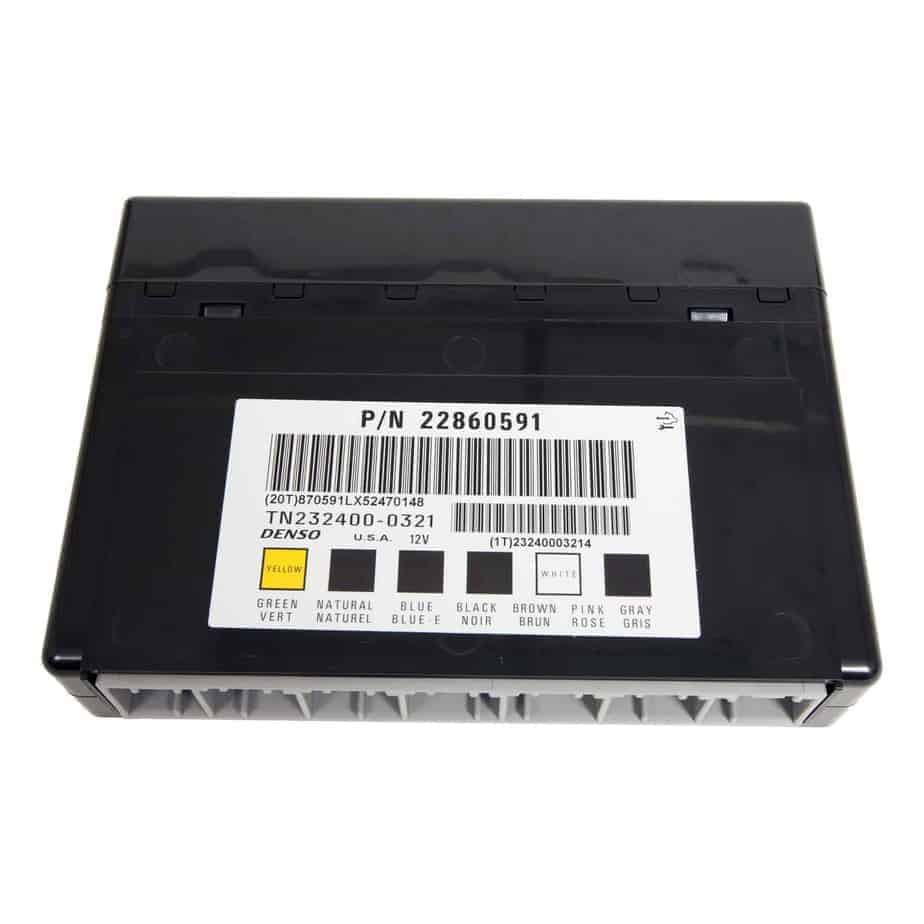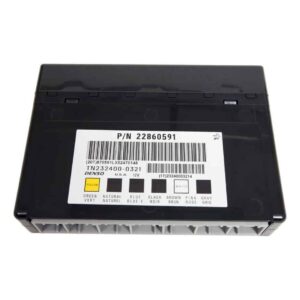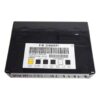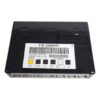Tired of Chasing Electrical Gremlins in Your GM Vehicle?
As a technician with over two decades of diagnostic experience, I’ve seen it all. A customer comes in with a car that seems possessed: the dome lights flicker randomly, the power windows have a mind of their own, the security light won’t turn off, or worse, the car won’t start at all. After hours of checking wires and fuses, the culprit is often the same: a failing Body Control Module (BCM). This module is the central command center for your vehicle’s body electronics, and when it goes bad, it creates chaos.
This isn’t just an inconvenience; it can be a serious issue. A faulty BCM can affect everything from your interior lighting and anti-theft system to critical safety components. Don’t let a failing module compromise your vehicle’s reliability. We offer a dependable and straightforward solution: a replacement GM Body Control Module, part number 15093910, that arrives at your doorstep fully programmed for your specific vehicle.
A Technician’s Notebook
A customer’s 2008 Chevy Impala came into the shop last month with a classic case of BCM failure. The radio would turn on and off by itself, the turn signals worked intermittently, and the ‘Service Theft System’ message was constantly on the dash. The owner had already replaced the battery and checked all the fuses. Using a professional scan tool, we saw multiple communication loss codes with various modules. This pointed directly to the BCM, the network’s traffic controller. We installed one of our pre-programmed modules, and within 30 minutes, every single issue was resolved. This is the kind of definitive fix this part provides.
Is Your Vehicle Showing These Classic BCM Failure Signs?
A failing BCM can manifest in numerous ways. If you’re experiencing any of the following, your GM Body Control Module is likely the cause:
- ✔ Erratic or non-functional interior and exterior lights (headlights, taillights, dome lights).
- ✔ Power windows, door locks, or mirrors not working correctly or at all.
- ✔ The horn sounding unexpectedly or not working when pressed.
- ✔ Constant ‘Service Theft System’ or ‘Security’ warnings on the dashboard.
- ✔ A no-start or no-crank condition, even with a good battery.
- ✔ Wipers turning on by themselves or not responding to the switch.
- ✔ Inaccurate or dead gauges on the instrument cluster.
A Straightforward Guide to Your BCM Swap
While the location varies slightly by model, the replacement process is generally manageable for a confident DIYer. This pre-programmed module eliminates the most difficult step: the trip to the dealership for expensive programming.
- Safety First: Always disconnect the negative terminal from your vehicle’s battery and wait a few minutes before starting work.
- Locate the BCM: On most of these GM vehicles, the BCM is located under the dashboard, often on the driver’s or passenger’s side, or in the center console area. A quick search for your specific model will confirm its location.
- Disconnect and Remove: Carefully unplug the electrical connectors. They have locking tabs that need to be depressed. Once disconnected, unbolt or unclip the old module and remove it.
- Install the New Module: Mount your new, pre-programmed BCM in the same position as the old one. Securely plug in all the electrical connectors, ensuring they click into place.
- Reconnect and Test: Reconnect the negative battery terminal. Turn the key to the ‘On’ position and test all body functions—windows, locks, lights, wipers, etc.—to confirm the fix.
⚠️ Important Post-Installation Steps
After replacing your GM Body Control Module, a few final procedures are often required to ensure full system functionality and safety. These steps typically require a bi-directional scan tool.
- Airbag System Reset: If the airbag warning light is on, you must perform the ‘Setup SDM Primary Key in BCM’ procedure. This re-establishes communication between the new BCM and the airbag system’s Sensing and Diagnostic Module (SDM).
- Brake Pedal Position Sensor Relearn: Some vehicles require a recalibration of the brake pedal position sensor. This is crucial for the proper operation of the brake lights and stability control systems.
If you are not equipped to perform these relearn procedures, we strongly recommend seeking assistance from a qualified professional mechanic to complete the installation.
Verified Vehicle Compatibility List
This module is a direct replacement for a wide range of General Motors vehicles. Please verify your part number or contact us with your VIN to confirm fitment. This unit replaces part numbers: 10382479, 15093910, 15276271, 15299986, 15819552, 15828601, 15837419, and many more.
AVALANCHE 1500 10
CAPRICE 11-13
CAPTIVA SPORT 12
CTS 08-13
DTS 06-11
ENCLAVE 08-12
EQUINOX 07-09
ESCALADE 10
ESCALADE ESV 10
ESCALADE EXT 10
EXPRESS 1500 VAN 08-12
EXPRESS 2500 VAN 08-12
EXPRESS 3500 VAN 08-12
G8 08-09
HUMMER H2 08-09
IMPALA 06-13
LUCERNE 06-11
MONTE CARLO 06-07
OUTLOOK 07-10
SAVANA 1500 VAN 08-12
SAVANA 2500 VAN 08-12
SAVANA 3500 VAN 08-12
SRX 07-09
STS 10
SUBURBAN 1500 10
TAHOE 10
TORRENT 07-09
TRAVERSE 09-12
VUE 08-10
YUKON 10
YUKON XL 1500 10
Frequently Asked Questions
What exactly does a Body Control Module do?
The BCM is a computer that manages the electronic accessories in your vehicle’s body. It controls non-engine related functions like power windows, locks, lights, wipers, security systems, and more. It acts as a gateway, allowing different electronic modules to communicate with each other.
Why do you need my VIN to program the module?
Your Vehicle Identification Number (VIN) allows us to flash the BCM with the exact software and settings specific to your vehicle’s factory-installed options. This ensures all features work correctly right out of the box and makes the installation process much simpler for you.
Is this a brand new part?
This is a professionally inspected and tested, OEM-quality recycled part. Each unit is guaranteed to be fully functional and is loaded with the latest vehicle-specific software from GM, providing a reliable and cost-effective alternative to a new dealer part.
Will I need special tools for the installation?
For the physical swap, you will typically only need basic hand tools like a socket set or screwdriver. However, to complete the necessary post-installation procedures like the airbag system reset and brake sensor relearn, a professional-grade bi-directional scan tool is required.
What happens if I don’t perform the post-installation procedures?
Skipping these steps can leave critical safety systems inoperative. For example, the airbag warning light may stay on, indicating the system is disabled. The brake lights or stability control may also not function correctly. It is essential to complete all required relearn procedures.



